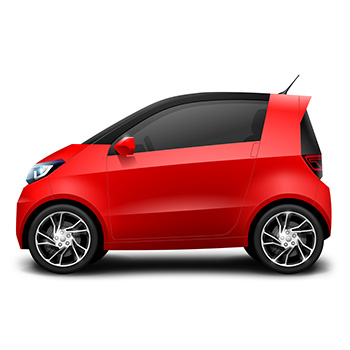All About Smart Cars: Where They’ve Been and are Headed

Smart Cars are often thought of as eco-friendly, convenient and downright cute! But how much do you really know about the history of the Smart Car and its technology?
The City Coupe Smart Car is just over 8 feet long, less than 5 feet wide, and about 5 feet tall. Whether you’re in the market for a new efficient car or just curious what the hype is all about, here is a brief history of the Smart Car and where it stands in the U.S. auto market. Whether you love them or hate them, this is an automobile that has definitely made an impact on driving around the world.
Smart Cars in the 1990s
Nicholas Hayek, the inventor of Swatch watches, had an idea for a compact, fuel efficient car that was easy to park in tight spaces. He took his idea to Mercedes-Benz, which developed a concept car in 1994. Under the company name, Micro Compact Car, the company created a City Coupe that was unveiled at the 1997 Frankfurt Motor Show. Hayek was disappointed in the conventional engine, high price, and slow sales, so he pulled out of the venture. Daimler AG, a German multinational automotive corporation, is the parent organization of Smart Cars today.
Smart Cars in the 2000s
In 2007, a Smart USA division was created as part of the Penske Automotive Group. The United States became the 37th country to market and sell Smart Cars in the late 2000s. However, this is around the time that the recession began to impact American consumers, and Smart Car sales slowed down.
Challenges of the Smart Car
There have been major concerns about Smart Cars being unsafe and unstable in the event of a collision. They have shown to be less stable than larger vehicles at high speeds as well. Therefore, Smart Cars are typically recommended for city driving at low-to-moderate speeds.
How Smart Cars Work
Smart Car engines are located in the trunk, rather than the front of the vehicle. To make Smart Cars safer, the manufacturer uses a Tridion steel safety shell to enclose the entire vehicle and it’s performed well in crash tests. At the front of the Smart Car, there is a small energy-absorbing crumple zone to reduce impact. Smart Cars have replaceable and recyclable body panels, making it possible for owners to change the color of their cars when they crave a new look. According to Smart, the 61-hp engine can go from zero to 60 mph in about 15 seconds, and the speedometer tops out at 84 mph.
Perks of the Smart Car
Despite some challenges, drivers are drawn to Smart Cars because of high gas prices, environmental concerns, and parking issues in crowded cities. The Smart Fortwo, for example, seats two people and has enough room in the back for a couple of small bags. Fuel efficiency is the biggest perk of Smart Cars, as they get about 46.3 mpg for city driving and 68.9 mpg for highway driving. Smart Cars have caught on much quicker in Europe and Japan than in the United States so far, and the price for a Fortwo in the U.S. ranges from about $25,000 to $35,000.
So with all these factors in mind, would you consider a Smart Car for your next vehicle purchase?
Categorized in: Driving, Technology
